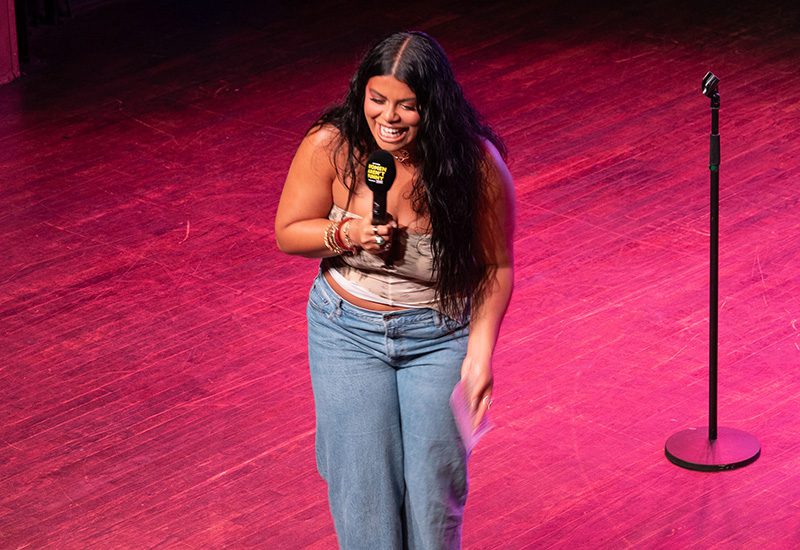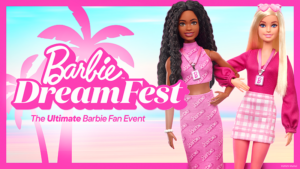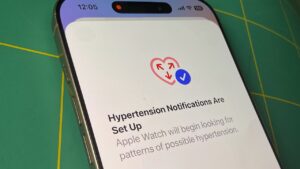


We’ve seen more and more influencers headline pop-ups and shows, with brands tapping into the content creators’ followings as a draw for in-person attendance and online chatter. Recently, Drew Afualo, who has 8.2 million TikTok followers, led Betches Media and Truly’s “Women Aren’t Funny” live comedy event in New York City. In April, clothing brand Garage partnered with influencer and podcaster Hallie Batchelder, with 616K TikTok followers, to host a Dirty Detox event that offered attendees IV treatments, an ear piercing station, mirrored photo ops and Hallie’s Detox Bar.
Beyond being the center of an event program, influencers are vital to an event’s promotion, before, during and after, especially when brands partner with several creators to amplify the messaging. Influencers have perfected their posting methods, too, down to the visuals, hashtags and sharing times, and brands are tailoring their events to create the right environments, or content hubs, to help creators thrive. It’s certainly paying off, as we’ve seen brands tout activations that garnered social impressions in the billions.

We spoke with event profs both on the brand and agency sides to share insights on follower-count trends, brand trips, influencer contracts and more.
Micro vs. Macro Influencers
There are four main tiers to the influencer hierarchy: nano influencers (1K-10K followers), micro influencers (10K-100K followers), macro influencers (100K-1M followers), and mega influencers (1M+ followers). For years, brands leaned on mega influencers with millions of followers representing a wide range of demographics in an effort to get more bang for the buck. But today, content creators with a smaller, more targeted following that feel “in reach” of audiences are part of the budget.
In fact, Pew Research Center in February published a research report that found that the largest share of TikTok creator accounts is those with 50,000 to 499,999 followers, a group that makes up 42 percent of the creator accounts Americans follow. Surprisingly, just 10 percent of creator accounts that U.S. adults follow on TikTok have 1 million or more followers.
For a young brand like Yuzu, Match Group’s new dating and social app for the Asian community, influencer partnerships are key to tapping into a wider audience. Around the app’s launch in January 2024, Yuzu started hosting mixers around the country to meet young adults where they are and formed digital circles for users and fans to communicate. Cindy Lim, Yuzu’s head of brand, then linked up with influencers who were passionate about Yuzu and its focus on connection and belonging.
“For a starting brand, we have a pretty robust social media presence. We have close to 20K followers on Instagram and close to 30K on TikTok,” Lim says. “Influencers love spreading the word about our events for us. We don’t pay them necessarily for these posts, but they’re part of the Yuzu community and bring their friends to our events, where they reconnect and network… We also have p.r. packages that we send to influencers and friends of the brand.”
For its Hot Fellas Bakery pop-up inspired by a storyline in “And Just Like That…” season three, HBO Max promoted the two-day activation in New York City through partnerships with talent, celebrities and influencers. The brand invited content creators to the first day of the activation, and they turned around same-day content to drum up buzz before the final day. Influencer Jake Jonez, with 1 million Instagram followers, and actor Taye Diggs, with 1.7 million Instagram followers, both put on Hot Fellas-branded denim rompers in their content.
“They were both so awesome to wear the rompers and create content pre-promoting the activation… We wanted to make sure that we were reaching a range of audiences. Jake Jonez has a strong queer following; Taye Diggs has a pretty broad following, so it was a combination of who’s going to really rock this [romper] and who has the right audiences,” says Dana Flax, vp-originals marketing at HBO and Max. “You’ve got to pre-promote and give the people a taste of what they’re going to get.”
Rise of the Internal Influencer: Not all influencers are independent of a brand. B-to-b brands are leaning on the influence of their leaders and people—the corporate rockstars—to connect with audiences, while brands like Fujifilm are stocking their influencer events with their own staff, who work side-by-side with creators to snap content.
Are Influencer Trips Worth it?

Tarte ceo Maureen Kelly responded to the Bora Bora trip’s online backlash in an interview with The New York Times, explaining that the influencers’ gifts are not provided by Tarte, but by smaller brands, many of which are woman-owned. In January, Tarte was met with controversy from followers for showcasing influencers #trippinwithtarte on Necker Island during the Los Angeles wildfires. (We hear there’s even more drama among the influencers behind the scenes…)
Even with the negative responses some brands have faced, influencer trips are still very requested as a high-value marketing tactic because they often result in a lot more content. “Coachella does a really good job of it, and the brands that take influencers to the festival are definitely trying to create longer moments, like half-day trips or situations where influencers spend a few hours with a brand on an experience curated for them,” says Adolfo Vasquez, president and managing partner at The XP Agency.
In March, SheaMoisture hosted its first international brand trip, inviting 13 influencers, community leaders and media members to a resort in Montego Bay, Jamaica, for three days of product exploration, live demos, styling sessions and cultural experiences to celebrate the launch of the brand’s Kalahari Melon Curl Stretch Collection.
Brianna Wright, head of p.r. and influencer marketing at SheaMoisture, says the trip was a response to the brand’s community asking for more dedicated events, and its online audience “was probably the most engaged I’ve ever seen” with all of the trip’s content that ranged from “Get Ready with Me” and “Outfit of the Day” videos to live Q&A sessions to sightseeing play-by-plays.
“Your brand will shine through when it feels authentic and you’re really honoring the guests, ensuring they have a positive experience. And that’s what they’ll remember most about the brand versus them just being talked at about the same product throughout the whole experience,” she says. “When you center your guests and honor the location and the community, that’s what’s going to resonate most and make them remember your brand for the experience and drive affinity.”
Ironing out the Fine Print

But experts say the most important details to iron out are those within the event experience itself, the stuff that’s going to generate the most interesting and authentic content for a brand, ultimately. If the event is a public one, work in a VIP morning that’s just for media and influencers, so they can capture content uninterrupted. If the event is a pure influencer-play, like many are at Coachella, consider taking over local real estate and creating a temporary brand home that functions as a content creation studio.
“There was a time where it was about making sure you have a hashtag, that there was a nod to social in some way and that that you had something that was potentially trackable. Now, it’s influencers,” Vasquez says. “They can take a picture anywhere; it doesn’t matter. Think beyond the photo moment and give them activities or something to do. That just adds more content, especially when they do those 60-second clips. They’ll make it work.”
Photos: Courtesy of XP Agency; Yuzu; Laura Valencia/Betches Media; Shatimah Brathwaite; Kursza
Related:
- As Trade Shows Embrace Influencers, Exhibitors are Leveling up Engagement
- Benefit Cosmetics Shares 10 Tips for a Lucrative Influencer Event
The post Fresh Thinking on Bringing Content Creators into Your Events appeared first on Event Marketer.











